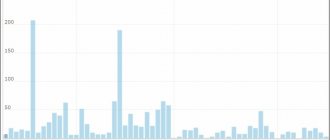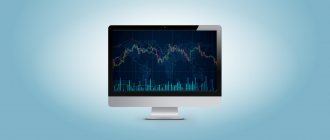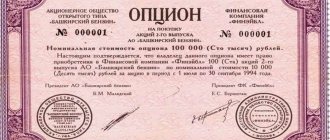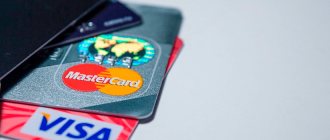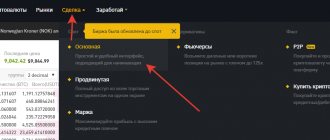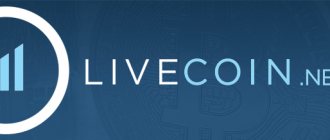Hello, dear readers.
Trading on the MICEX is a mandatory section of any review of economic news. Over the past 30 years, exchange trading has become one of the most important elements of the Russian economy. Colossal volumes of investment capital pass through one of the country’s largest national trading platforms, the MICEX, every year.
Therefore, today I will consider the mechanisms underlying the functioning of PJSC Moscow Exchange MICEX-RTS and the possibilities of conducting independent trading.
Exchanges in Russia
If countless films have already been made about American stock exchanges and brokers, and the same number of books have been written, the history of Russian financial markets cannot yet boast of such fame. However, in 2022, domestic sites experienced a real boom associated with the arrival of private investors.
Russian exchanges are not yet among the top 5 world exchanges, but they also provide investors with the opportunity to buy shares, bonds and other financial instruments. Thus, the daily trading volume of the Moscow Exchange is about $1.9 billion, and the St. Petersburg Exchange is about $1.44 billion.
Both exchanges trade securities, acting as intermediaries between issuers and investors. For this they receive their percentage of commission from transactions. There is a division on the exchanges: there are stock, futures, foreign exchange and commodity markets. Investors most often choose the market where stocks and bonds are traded. Therefore, further in the article there are details about the stock markets of both exchanges.
$1.5 trillion
daily trading volume of the largest stock exchange - New York (NYSE).
Where can you watch the progress of trading online?
To conduct successful trading on the MICEX, an investor must constantly be aware of events taking place on trading floors.
It is very convenient to monitor all the changes taking place on the MICEX online using the official website of the exchange - moex.com.
MICEX index chart
RTS index chart
Major stock quotes
schedule
Moscow Exchange quotes
SCHEDULE
Caution about BO and Forex
Expert opinion
Vladimir Silchenko
Private investor, stock market expert and author of the Capitalist blog
Ask a Question
Many who want to start trading in financial markets find themselves in an unpleasant situation - they simply do not reach a brokerage company. An abundance of online advertising and other promotional gimmicks with binary options and Forex lure people away. Citizens become clients of dubious dealing centers that create the appearance of trading. Sooner or later, their deposit is necessarily “merged”, and the money is taken offshore.
Binary options are traded on only two exchanges in the world - the American Stock Exchange (AMEX) and the Chicago Board Options Exchange (CBOE). Consequently, when selling them in Russia, customers are simply deceived. Forex, in turn, is very volatile and difficult to predict, which allows dealing centers not to bring transactions to the market, but simply wait until the next “virtual account” is drained, the funds from which end up in the hands of fraudulent owners.
When did exchanges appear?
The first stock exchange in Russia appeared by decree of Peter I in St. Petersburg and coincided with the year the city was founded. By 1914, the total value of all securities traded in the Russian Empire amounted to 13-15 billion rubles (in modern equivalent, 6.8-7.7 billion dollars). According to this indicator, Russia was ahead of Austria-Hungary and Japan, ranking 5th in the world.
In Soviet Russia, stock exchanges were closed by the government and only opened again in the 1990s, after the collapse of the Union. They were the Moscow Interbank Currency Exchange (MICEX), founded in 1992, and the Russian Trading System (RTS), operating since 1995.
Regulation of the exchange's activities
The exchange is a “ special market ” where “ fungible ” values are traded without actually presenting them and paying money for them. This requires the use of special regulatory measures to streamline relations between all participants in trade transactions.
There are:
- Regulation of exchange activities by the state, carried out by government agencies.
- Market self-regulation carried out by professional participants in asset transactions. There are 2 options possible - either the state independently transfers some supervisory and regulatory functions to its authorized representatives, or the formation of an organization by market participants themselves ( SRO ).
- Regulation through public opinion - it is precisely because of the reaction of broad sections of society that the state begins to take certain measures.
The principles for regulating all market procedures on the stock exchange take into account global experience in the functioning of the stock and financial markets. Responsibilities are optimally distributed between non-state and government agencies. Conditions are created to ensure maximum transparency of transactions and adoption of decisions that are optimal for traders and investors.
Elimination of the possibility of combining rulemaking and enforcement of requirements by one body. Ensuring the necessary level of competition.
Shareholder composition
In February 2022, the largest shareholders of the Moscow Exchange, with 5% or more of the votes, were:
The Moscow Exchange includes PJSC Moscow Exchange, which manages the platform. The group itself also includes a central depository (“National Settlement Depository”) and a clearing one (Joint Stock Company).
“National Settlement Depository” is a professional participant in the securities market licensed by the Central Bank. It keeps records of what financial instruments its participants own. “National Clearing Center” is also a professional participant who is responsible for mutual settlements between the buyer and seller of securities, acting as an intermediate link for each of them.
conclusions
Stock exchanges operate intermittently, and it is impossible to ignore this fact in trading. There are several such trading platforms operating in each country; it is not necessary to take into account the schedule of each of them in your trading. Limit yourself only to large exchanges - MICEX , LSE , Xetra , NASDAQ . If an instrument is traded on several platforms at once, then the initial fluctuations in the chart on one of them can suggest an upcoming movement on the others.
This nuance should be taken into account only if you actively trade in the stock market. If your goal is, for example, dividend yield , the exchange schedule will not be of much use. Previously, I published an article about how to receive dividends on shares, in which I discussed many of the nuances of this investment approach.
Ask questions in the comments and share your own experience . I will be happy to clarify any points that are not completely clear. I also recommend subscribing to my blog updates, you are guaranteed not to miss the release of new materials.
This concludes the review and says goodbye to you. I wish you success in investing and trading. I hope that the financial markets have already become a source of stable income .
If you find an error in the text, please select a piece of text and press Ctrl+Enter. Thanks for helping my blog get better!
What can you buy
On the Moscow Exchange, investors can buy shares, bonds, funds, currencies, money and derivatives market instruments, precious metals, and even grain and sugar.
Previously, the Moscow Exchange had a limited number of foreign securities, but since the end of summer 2022, the platform began to expand the list of issuers with foreign companies. At the beginning of March 2021, the total number of shares and depositary receipts of foreign issuers of the site reached 87. The issuers whose securities can be purchased on the Moscow Exchange included Sony, Toyota, 3M, GAP, Oracle, Moderna and the company of the world-famous investor Warren Buffett, Berkshire Hathaway.
Trading instruments of the Moscow Exchange
Now let's move on to considering the list of trading instruments, which are divided according to sectors on the Moscow Exchange.
Stock
Let's start with the largest and, perhaps, most important - the Moscow Stock Exchange or the stock sector. Here, shares of a huge number of companies are offered for purchase, about 270 shares in total from more than two hundred issuers. All stocks are divided into three levels, so everyone can choose an investment portfolio to their liking.
Of course, these are not thousands of papers, as on American sites, but, in truth, only a few dozen are of interest. For example, everyone knows Gazprom, but hardly any Surgutagrokhim. Accordingly, the greatest demand is for a number of securities that relate to large companies that are well known to any resident - the previously mentioned Gazprom, Sberbank, and so on. The name “blue chips” is used, that is, these are the most traded shares, for which daily turnover is ahead of all others.
This does not mean that you only need to buy them, and if you buy them, they will definitely increase in price. The logic behind holding such shares is as follows:
- Earnings on capitalization growth , that is, we hope for an increase in the value of the stock.
- Receiving dividends . This is part of the distributed earnings per share, depending on the financial results of the company.
However, there are situations when a seemingly not very well-known company suddenly begins to show rapid growth. There are even investors who buy up unattractive stocks at low prices and wait for them to take off. In this case, the entire large assortment of the Moscow Exchange can really come in handy.
Bonds
This is the second part, which, together with shares, are representatives of the stock sector of the Moscow Exchange. Bonds are a type of debt obligation. On the stock exchange, these are usually loans for large companies or the state. Typically, a bond has a face value of 1,000 rubles, which allows the investor (in this case, the lender) to purchase these securities for almost any amount. For all bonds, key parameters are specified in advance:
- Denomination This is, in fact, the very amount that we borrow. That is, we buy a bond for 1000 rubles, in this case 1000 rubles is the face value.
- Bond term, money back date. Everything is simple here: we bought a one-year bond with a maturity date in a year, for example, December 16, 2020. The money will be returned on this day.
- Coupon income. This is the interest that an investor will receive for borrowing money by purchasing a bond. Expressed in annual terms, that is, for a 6-month bond you can expect half the specified interest.
- Coupon payment schedule. In this case, it is determined how often the investor will receive his interest. It can be different here, that is, the frequency of payments must be looked at in the information on the security itself.
Bonds can be called a popular investment tool. The whole question here is who borrows this money. There are two main types, which have some differences:
- Government bonds , which are called OFZ. In general, everything is simple, the borrower is the Ministry of Finance, the reliability is the highest, the coupon income is not very large, precisely because of the high reliability and, accordingly, the high demand for securities.
- Corporate . There is already a higher income and it is connected with the fact that even the largest corporation is not a state and anything can happen. However, the probability of such an event is extremely low, so you can safely buy such debt obligations, the rate on them is higher.
An interesting fact worth noting is that the most common comparison of bonds is usually with bank deposits. The income on bonds is still higher, and in final percentage terms it can even significantly exceed the bank’s indicator. However, by putting money on deposit, we enter the DIA deposit insurance structure, which, in the event of bank bankruptcy, will return funds to us in the amount of up to 1.5 million rubles. In the case of a corporate bond, nothing like this will happen.
Currency market
The Moscow Currency Exchange is, in fact, the part that existed before the MICEX. The number of trading instruments cannot be called large; these are mainly currency pairs with the ruble. The largest trading turnover, of course, falls on the dollar/ruble pair (more than 85%), and all others depend on the dynamics of this particular pair. The pairs are accompanied by the following symbols:
- TOD – delivery today (from the word today)
- TOM – delivery tomorrow (from the word tomorrow)
The list of trading instruments includes some of the major pairs, however, there is not such a wide list as forex brokers. Therefore, we can say that there are no great prospects for fans of currency trading on the Moscow exchange.
On the other hand, there are the main pairs, as well as all those that are of practical interest in trading with the ruble, which is what the Moscow Currency Exchange is focused on.
As for trading conditions, everything is in perfect order and meets even the highest expectations, the only thing that can spoil the picture is the high commissions for transactions on the part of the broker providing access to the Moscow Currency Exchange, they can differ quite a lot, about the same as and in the case of dealing centers.
ETF on the Moscow Exchange
The Moscow Stock Exchange gives investors the opportunity to buy a ready-made portfolio, which is formed according to any principle. It could be anything, shares of the metallurgical sector or Eurobonds.
The main beauty of such instruments is that, as in the case of bonds, we have the opportunity to purchase volumes that are hundreds of times less than the minimum value for some instruments. This means a very small minimum order size. For literally 10,000 rubles we can buy “part” of a portfolio, which in normal calculations costs millions of rubles. That is, millions will not be required; we will buy exactly the part that we can afford. This is a relatively young, but very promising option for stock trading.
In addition to the fact that the investor does not need to take out the securities himself, but only need to buy ETF shares once, another undoubted advantage is the fact that there is no need to bother with the profits received from the shares and reinvest them in the same instruments - he does all this himself fund. That is, this is included in the price of shares. Therefore, all that remains is to buy and sell these shares.
Another positive feature is working with foreign assets through these funds with settlements in Russian currency. We charge the offered ETFs for rubles, and the portfolio can be compiled even across Australia. That is, due to this, we do not use the Moscow Currency Exchange, everything is presented in the stock sector, and this is a very convenient extension to the list of stock instruments.
Precious metals market
It belongs to the commodity market, but trading with delivery takes place on the Moscow Currency Exchange, settlements are mainly carried out in an impersonal form on metal accounts. Available instruments include gold and silver.
In general, this sector cannot be called active, since the turnover is not very high. In general, in recent years there has been a tendency towards the state purchasing metal, that is, replenishing gold and foreign exchange reserves with gold itself. What is traded on the market as a whole, according to various sources, is 97% so-called “paper” gold, that is, these are endlessly resold obligations, pure speculation.
It is worth noting the presence of contacts with foreign exchanges - the world-famous metal exchange in London, as well as the lesser-known, but quite understandable why, no less important exchange in Zurich.
We also draw your attention to the fact that trading in precious metals on the Moscow Exchange differs from what we are all accustomed to - namely, the price of gold expressed per troy ounce in dollars. On our site, grams of gold are traded for Russian rubles. You can quickly get used to this, however, at first it will be difficult to assess the scale of the movement, since everyone gets used to the same scale, and they don’t pay much attention to percentages. But the fact that an ounce contains about 30 grams, and a ruble a little more than 60, is not so difficult to estimate.
Moscow Exchange derivatives market
The Moscow Derivatives Exchange is represented by contracts that have a delivery date, which, in principle, follows from the name. The following types of tools are in use here:
1. Futures . This is a transaction in which the product is delivered within a specified time frame. A very common trading instrument, which is offered both in the main and additional trading sessions along with currencies. Futures on the Moscow Exchange are available in different groups:
- currency pairs;
- stock indices;
- individual shares;
- interest rates;
- commodity contracts;
- bonds.
2. Options . These are papers that allow you to buy goods at a certain price within a specified time frame. The turnover is not at all large, but the instrument is still used in trading by many traders, especially during periods of unstable situations and a strong increase in volatility in financial markets or individual instruments.
How the auction works
The Moscow Exchange operates in 5/2 mode, and the morning begins with an early session on the foreign exchange market. The trading session for currencies starts at 7:00 Moscow time. From 9:50 to 9:59 there is an opening auction - bids (orders) of participants for purchase and sale are collected. This helps determine the prices of the first transactions and eliminates manipulation at the start of trading. The main session starts at 10:00, and the first half of the day is intense - traders and investors react to important news that got caught in the information noise on the eve of the start of trading.
Closer to lunch, as a rule, stock prices stabilize. But the second half of the day depends on foreign quotes.
Most instruments are traded in rubles, even when purchasing shares of foreign companies. Despite this, dividends on American securities are paid in US dollars.
Previously, trading ended at 18:49:59, but since June 2022, the Moscow Exchange has introduced an additional evening trading session, during which it is possible to enter into purchase and sale transactions for shares included in the list approved by the Moscow Exchange. Now you can buy or sell some securities until 23:50.
List of shares admitted to evening trading
The Moscow Exchange can turn on the discrete auction mode if the price of any share included in the Moscow Exchange index is unstable and changes by 20% or more within 10 minutes. The exchange suspends trading for half an hour to collect limit orders. Based on them, the market price will be re-formed. The same thing happens if the Moscow Exchange index rises or falls by 15% within 10 minutes. If this happens three times in one day, trading will stop until the next day.
Useful material for a newbie on the Moscow Exchange website
I would also like to point out that a novice investor should look at the Moscow Exchange website.
MarketPlace
This is a new exchange resource for beginners. There is educational content (articles about investments, educational newsletters), ideas for purchasing securities with analytics for a specific company. You can also open a brokerage account online here. True, in response to my attempt to do this, only two possible brokers were given: Otkritie and KIT Finance.
I hope the list will continue to grow. An interesting opportunity to practice on a demo account with virtual 100,000 rubles. Try your hand at it before you start spending real money.
Moscow Exchange School
The Moscow Exchange School has existed for several years. It is based on practical webinars: paid and free. You can choose the level of training: beginner, intermediate, professional.
For private investors
I recommend opening the “Private Investors” tab to all novice investors:
- Where to begin? They will tell you what an investor must do to start trading on the stock exchange.
- Products. They will introduce you to all the investment instruments that are traded on the stock exchange: stocks, bonds, Eurobonds, exchange-traded funds, futures, options, currencies.
- Quotes. Information is necessary not only for beginners, but also for professionals.
- Trading calendar. An interactive calendar that will tell you the dates for the execution of futures contracts and the redemption of bonds.
- Tax benefits. This tab is required for viewing and careful study by all investors (not just beginners). All information on taxation of securities is in the presentations.
- Education. Redirects to the Moscow Exchange School.
Indexes
The “Indices” tab is useful for those who are interested in what indices are quoted on the stock exchange, what they include, how they are calculated and what dynamics they have shown since their creation.
For example, using the Moscow Exchange index, you can find out a lot of interesting things on one page: main characteristics, dynamics of changes in quotes, industry structure and top 10 stocks. The separate “Calculation Base” tab contains a complete list of securities included in the index (38 as of September 18, 2020).
What can you buy
On the St. Petersburg Exchange you can trade more than 1,500 instruments, including foreign securities and Eurobonds. The commodity market is available on the exchange: from construction materials to aquatic biological resources and their processed products. Russian securities are currently represented in a smaller volume than we see on the Moscow Exchange. Only investors who have confirmed their qualifications, for example, having proven experience in exchange trading, professional education or a certain amount in the account, can buy or sell ETFs on the St. Petersburg Exchange.
Where is the best place to trade stocks?
To begin with, you can use the services of the BCS company, which offers a small entry threshold and has access to large international stock exchanges.
Terms of trade:
- Having a single account, you can start working on Russian, European and American sites.
- The deposit amount is from 1 dollar if you work in the foreign exchange market.
- Ability to use company software and QUIK.
- The company makes it possible to open an individual investment account and receive tax compensation from the state.
Most large banks in the Russian Federation offer ]stockbrokers[/anchor] on various conditions.
Among them are:
- "Sberbank";
- "Alfa Bank";
- Tinkoff Bank;
- VTB;
- "Finam."
You can trade shares on the market online. This is a simple and reliable way to manage your own capital, since the trading process is much faster than in the classic version. With the advent of electronic platforms, brokerage services have become cheaper.
In order to trade stocks online, you need to follow a number of steps:
- Choose a broker for online stock trading.
- Make an agreement with him.
- Install a special program on your PC for trading securities.
- Receive an access key to the software from the broker.
- Ask your broker how to open your trading account.
When trading online, a person spends less time, because you can purchase shares and complete the transaction with one click of the mouse. The volume of paper documentation is reduced, and a participant in online trading has the same conditions as traders trading on the site.
Access to foreign securities
Investors' shares and bonds are kept in Best Efforts Bank PJSC (Russia), and money is kept in a clearing account in the IFAC Clearing Center in the National Settlement Depository (NSD).
PJSC "Best Efforts Bank" takes into account investors' securities in a sub-account; investors' rights to securities are taken into account in the broker's depository and then, through a chain of nominee holders, this right is taken into account both in the American DTCC and in foreign depositories. The buyer is recognized as the ultimate owner of the shares, retaining all ownership rights due to him. That is, if you live in Ryazan and bought Tesla shares, you will become a real Tesla shareholder while living in your city.
Admission of securities of foreign issuers to trading is carried out without an agreement with the issuer on the basis of clause 4.1. Article 51.1. "Law on the Securities Market". This allows the shares and bonds of the most liquid foreign companies to be admitted to trading.
Asian bloc
Tokyo alone , although this exchange accounts for the lion's share of the volume. Among other sites, we highlight Hong Kong and Singapore .
| Exchange | Trading session | Lunch break | Premarket | Postmarket |
| JPX (Tokyo) | 03:00 — 09:00 | 05:30 — 06:30 | — | — |
| HKEX (Hong Kong) | 04:30 — 11:00 | 07:00 — 08:00 | 04:00 — 04:30 | — |
| SSE (Shanghai) | 04:30 — 10:00 | 06:30 — 08:00 | — | — |
| SGX (Singapore) | 04:00 — 12:00 | 07:00 — 08:00 | 03:30 — 04:00 | — |
There is no support for daylight saving time conversion in this region. So the work schedule does not change throughout the year .
Not everyone will find it convenient to work at these sites. If you live in a time zone, for example, GMT+2 or GMT+3, then trading will start late at night. The Chinese stock exchange may look attractive, but it is better to select sites so that you do not have to rearrange your daily routine because of them.
How the auction works
After an investor submits an order to purchase financial instruments to a broker, it seems that the papers have been deposited into the account and here it is, the desired ownership of Elon Musk’s business. In reality this is a little different. Settlements for foreign securities take place in the T+2 mode - this means that settlements for transactions take place on the second trading day from the moment the transaction is made. If you buy 1 Tesla share, it will immediately be reflected in your personal account in the broker’s application. The money for it is reserved in the account immediately, but the depository will take into account the shareholder’s rights already on the second trading day.
Main trading in foreign securities on the St. Petersburg Exchange begins at 10:00 Moscow time and ends at 02:00 of the next calendar day. For some securities, transactions can be completed before 1:45. This is due to the time difference with the United States and the characteristics of the country. For example, there is no trading on American public holidays. This was the case on February 15, 2022 - President’s Day, which is celebrated every third Monday in February, fell on this date - then trading in American securities was not carried out. Information about the trading schedule can be found on the website of the St. Petersburg Exchange in a special section.
In the first half of the day, transaction volumes are formed only by Russian issuers. From 14:30 to 23:00 Moscow time, American market participants are added to the trading. This time coincides with the opening hours of US exchanges. When the United States switches to winter time, the trading period with additional liquidity moves forward by an hour.
Liquidity is a property of securities. Securities with high liquidity can be sold at any time at a price close to the market price.
Market makers and professional participants in the securities market maintain the liquidity of securities. It is market makers who, by placing orders, create additional liquidity. The purchase and sale of securities of foreign companies is carried out in foreign currency. In order to buy securities in the Gazprombank Investments application, you first need to buy dollars into your brokerage account and then use them to buy securities.
Preparing to trade
Today it is quite simple for an individual to start trading on the MICEX from scratch. And yet, a small educational program on trading and the MICEX will be useful for a beginner.
What amount to start trading with?
You don’t need experience to understand that real transactions on the MICEX are not made for free. Therefore, before concluding an agreement with a broker, it is worth deciding how much money you are willing to deposit on a future deposit for further trading.
On the surface, this question seems very simple, but experienced traders take it extremely seriously:
- A small volume of investment will not immediately give the desired profitability on the MICEX. In this case, the beginner can move on to frequent speculative transactions. This is a risky trade that leads to losses and complete loss of the deposit, especially if a person works very little in the market.
- Large investments can provide good returns on the MICEX. But this is not the best option for a novice investor. Losses occur even with competent, effective trading. A significant profit means a corresponding loss. An unprepared person, seeing a minus on the account after trading, becomes stressed and begins to make incorrect trading decisions.
At the same time, it should be noted that the concepts of “many” and “few” on the MICEX are quite relative. Therefore, the right decision would be to listen to experienced market players. They advise allocating only available funds for investment, the withdrawal of which from your personal or family budget will in no way affect your standard of living.
If in this option the one-time funds allocated for the exchange seem insufficient, create your initial deposit, saving monthly. Under no circumstances trade with borrowed funds, do not work with brokers and organizations offering to form your initial depository for trading on the MICEX with borrowed funds.
Is it possible to trade without a broker?
An interesting question will be about the possibility of trading on the MICEX without any intermediaries, that is, brokers. The solution to the problem is to open your own brokerage company. However, the idea of creating a licensed company for your needs is quite expensive.
Today, a simple private person does not have the opportunity to gain access to trading on the MICEX directly? If only because brokerage services are a licensed activity. A license to provide brokerage services is not issued to individuals.
Tips for choosing a broker
Today, the Russian financial services market is overflowing with offers to “open a trading account and start making money on the stock exchange.” You can make a fairly simple division of all brokerage companies into reliable ones and those whose reliability is quite difficult to verify.
Let's look at the latter first. Companies whose reliability is difficult to verify include any company that has at least one of the characteristics listed below:
- does not have Russian registration (or has a duplicate company registered in Russia, but works with the client through a company registered offshore);
- offers the client trading on the exchange with large leverage (1:50, 1:100, 1:1000);
- concludes service agreements remotely or bypassing the State Services system, and does not have an office for this purpose;
- does not have the appropriate licenses to carry out brokerage activities;
- offers to trade on the stock exchange with non-standard instruments - binary options (which have never existed on the Russian market);
- positions itself as a dealing center;
- positions itself as a forex dealer;
- offers to start trading on Forex (even if the offer comes from an honest company, this market is not suitable for trading for a novice trader).
When choosing your first broker for trading on the MICEX, a future investor is not recommended to enter into an agreement with an intermediary that has the above characteristics.
The right decision would be to use the services of a long-proven company that has a Russian license and jurisdiction (Finam, Otkritie, BCS, Sberbank, Uralsib and other well-known Russian brokers).
Such a company operates strictly within the Russian legal framework, has Russian accounts, and all disagreements arising when trading on the MICEX can be resolved within the framework of domestic legal proceedings.
Reliable Russian brokers
| Name | Rating | pros | Minuses |
| Finam | 8/10 | The most reliable | Commissions |
| Opening | 7/10 | Low commissions | Imposing services |
| BKS | 7/10 | The most technologically advanced | Imposing services |
| Kit-Finance | 6.5/10 | Low commissions | Outdated software and user interface |
Registration and creation of a demo account
To understand which broker is right for you for trading on the MICEX, try trading without risk, there is a demo account. This is an electronic simulator that completely copies market quotes. Trading on a demo account is carried out through the terminal, but the deposit contains virtual rather than real funds. For beginners, the best thing is to try trading on the stock exchange without risk.
To create such an account, you need to register on the website of the brokerage company you like. This procedure will not take much time. It must be said that not every online resource has a “registration” link; sometimes the search does not produce results. Registration is then only possible when opening a demo account.
To do this, you will need to enter your last name, first name, patronymic, email and phone number, and receive an SMS code or link to confirm registration. After confirming the data, you need to log in and download the distribution kit of the demo terminal on the broker’s website. After installing the program, you will be asked to open a demo account for trading on the exchange.
Opening an account and selecting a section: stock, futures or foreign exchange
To work on the MICEX “in real life” you need to open an account.
The best option would be to do this directly in the office. To conclude a client agreement, you will need a passport. A branch employee will fill out the necessary paperwork and help you decide on the MICEX section you need for trading.
Also, users of the State Services system can open an account via the Internet. To do this, you need to step by step follow the instructions posted on the broker's website.
A separate issue is the choice of the MICEX market section on which trading will be conducted. If you know in advance what to buy/sell, then perhaps making a choice will not be difficult. However, if you come to the stock exchange with the goal of making money, but have no idea where to start trading, you may encounter difficulties in choosing a trading instrument.
Let’s not lie, when taking your first steps into the world of investment, consider the simplest and most reliable option - the MICEX stock market will be understandable even for dummies.
You should not start your trading career with the derivatives market on the MICEX, which, although similar to the stock market, has a number of features. They can be an unpleasant surprise for a newbie.
Moreover, you should not make initial investments in the foreign exchange section; this market is the least studied today. Most trading strategies and technical analysis tools were developed for stock markets. They do not always work on the MICEX currency exchange sites.
Tariff selection
Most brokers may charge clients different service fees. However, an analysis of the financial services market shows that so-called universal tariffs are better suited for beginners for independent trading.
This is simply charging a fee in the form of a percentage or a fixed amount of the transaction being completed, without any additional payments. This tariff is simple and clear.
Depositing funds into an account
After concluding a brokerage service agreement, a trading account will be opened for you. There are different ways to replenish it.
The simplest of them is to deposit funds through the cash desk at the company’s office. However, not every brokerage office has such a cash desk.
If this is not available, you can top up by bank transfer. The money will be on deposit within 24 hours, but a commission will be charged for the transfer. If there is a brokerage bank, then there may be no commission for depositing funds.
A convenient way to deposit money is via online banking or mobile banking application. Having saved the payment template once, you will no longer need to fill in the recipient’s details and your data. In the same way, you can carry out a transaction using a debit card, and in some cases, a credit card (“Tinkoff Investments”).
If the above methods of depositing funds do not suit you, money can be deposited using electronic payment systems. Not all companies support such transfers, and this should be kept in mind when choosing a broker.
Market situation analysis
When the funds are credited to the trading account, the client can begin working on the MICEX. Experienced traders carefully analyze the market situation before opening a transaction. We advise you to adhere to this rule.
There are two different approaches to studying price movement:
- fundamental analysis (assessing the potential impact of actual events on changes in the value of an asset);
- technical analysis (the use of statistical and mathematical assessment methods, technical indicators and figures indicating the further nature of price movements).
Development of a trading strategy
The ability to analyze the market and anticipate its further movement creates the prerequisites for creating a trading strategy - a specific algorithm for the trader’s actions, for successful trading on the MICEX.
As a rule, a trading strategy is based not only on fundamental and technical signals, but also includes elements of money management.
Even working on the same trading strategy, different traders can show different results on the MICEX. With long-term use and improvement of the trading strategy, the trader receives a trading system - a profitable algorithm of actions in the market, which is effective only if all its points are fulfilled by the developer himself.
How dividends are paid
In order to receive dividends from foreign shares before closing the register of shareholders, it is important for the investor not to forget about the T+2 trading mode. That is, you need to buy shares of foreign companies paying dividends 2 days before the closing date of the shareholder register, and not on the same day.
Dividends will not come immediately. The average accrual period is 5-6 days after they are paid by the issuer. During these days, the broker's depository distributes them to clients' accounts. This is due to the time difference with the United States and the timing of bank transactions for transferring funds.
Derivatives market participants: speculators, arbitrageurs and hedgers
Unlike the stock market, long-term “buy and forget” investors are not very frequent visitors to the derivatives market. This is due, first of all, to the specifics of the assets traded on this market. As a rule, the maturity of futures contracts does not exceed a year, in very rare cases it can be two years. Therefore, the derivatives market is more suitable for traders who make money on price fluctuations.
I also recommend reading:
What is a spread on the stock exchange and how to take it into account
What does a spread on the stock exchange mean?
Speculators
Speculators constitute the largest group in terms of number. Their task is to make a profit from asset price fluctuations. Modern realities are such that “manual trading” in the derivatives market is becoming ineffective. This is especially true for the most liquid instrument of the Moscow Exchange derivatives market – RTS index futures. In its meaning, this is the expected value of the RTS index, multiplied by 100. It is denoted as RTS-MY, where M denotes the month and Y denotes the year. For example, RTS-6.19 denotes a contract with an expiration date in June 2022. This futures is traded in increments of 10 points. The cost of 1 step is equal to $0.2 in ruble equivalent at the current exchange rate. Experienced speculators use scalper “drives” – scripts that speed up trading operations and allow almost simultaneously placing orders to buy and sell an asset in the exchange’s “book” order. A typical scalper makes tens to hundreds of trades a day, trading inside the spread without any strategy and profiting from market volatility.
Arbitrators
Unlike speculators, who count on a favorable change in the value of an asset in the future, arbitrageurs, as a rule, use the difference in asset prices in different markets (spatial arbitrage) that exists at the moment. Another popular type of arbitrage is trading the spread between an index futures and a basket of futures that serve as the basis for calculating the index. An example is the RTS Standard index (also known as MOEX Blue Chip), calculated based on the prices of the 15 most liquid shares of the Russian market. When the spread between an index future and a basket of stock futures widens, the arbitrageur sells the more expensive asset and buys the cheaper one. When the spread narrows, he makes reverse trades.
Hedgers
Hedgers use derivatives market instruments to insure (hedge risks) against changes in prices for the underlying asset in the future. Historically, commodity futures transactions laid the foundations of the derivatives market. Suppose an investor purchased 100 shares of Rosneft at a price of 435 rubles. for 1 share. At the same time, he bought a put option, giving the right to sell an asset at a given price, on futures for Rosneft shares with an expiration date of 09/20/2019 (stock ticker ROSN-9.19M180919PA) and a strike price of 43,500 rubles. This is the price of a standard lot for stock futures - 100 shares. The option premium at the time of purchase was RUB 2,350.
I also recommend reading:
Technical analysis of stocks: does an investor need it?
Does technical analysis of stocks work?
Let's assume that in the future the shares fell in price by 35 rubles. (up to 400 rubles), due to which the total value of the position dropped to 40,000 rubles. When the option is exercised, the investor becomes the seller of a delivery futures contract for 100 Rosneft shares at a price of RUB 43,500. Closing a long stock position without hedging would have earned him RUB 3,500. loss, but thanks to the option the loss was reduced by 1150 rubles. up to the option premium of RUB 2,350.
If the shares, on the contrary, rise in price by 35 rubles. (up to 470 rubles), the cost of the position becomes equal to 47,000 rubles. In this case, the investor can refuse to exercise the option, and then his current profit will be the difference between the trading result on the shares and the option premium, i.e., 47000-43500-2350 = 1150 rubles.
Taxes on income on the stock exchange
All investors pay tax on their income. On income received from investing in securities and currencies, you will need to pay tax at a rate of 13%. If the investor’s total income is more than 5 million rubles per year, then the tax rate will be 15%. The same percentage will have to be paid on Russian coupons from bonds and from dividends on shares. For transactions with securities, the broker acts as a tax agent, but for transactions with currency, the investor is required to pay the tax himself.
Those who live in Russia and pay taxes under Russian law will have to pay a tax rate of 30% on dividend income from American companies. But there is a way to lower your rate by signing Form W-8BEN. It will confirm that the investor is not a US tax resident and has the right to apply a preferential tax rate on income in the form of dividends on securities of US issuers, regardless of which exchange the transactions are concluded on.
W-8BEN will reduce the tax to 10%, which will be withheld to the US budget. Since in Russia the tax on dividend income is withheld at a rate of 13% or 15% for income of more than 5 million rubles, if there is a signed form, the investor will have to pay an additional 3% or 5% to the Russian budget. If the form is not signed, tax at a rate of 30% will be automatically withheld to the US government at the time of payment of dividends.
According to Russian tax legislation, an investor is required to declare his income received from sources outside the Russian Federation (Article 229 of the Tax Code of the Russian Federation). These incomes also include income from dividends from American companies. To comply with the law, you must submit a 3-NDFL declaration and attach to it a document confirming the fact of tax withholding abroad.
How to take this information into account when trading
The opening of trading on the world's stock exchanges was discussed above; Moscow time was used. The tables show that sessions often overlap by 1-2 hours . This fact can be used in trading. We are interested in the European and American sessions ; maximum volumes are observed here for most securities, and the work schedule partially coincides with the MICEX.
Sometimes the opening of the American session acts as a marker indicating the movement of a security. Example:
- Yandex. On May 23 in the afternoon, the price of securities changed in a very narrow corridor around the level of 2,400 rubles per share. This lasted until the opening of the United States.
- Yandex is also traded on NASDAQ, at the beginning of the American trading session we see a solid Gap down, that is, priority is given to short positions.
- We have a couple of hours left before the Moscow Exchange closes, and we already know the priority direction of movement. Until the end of the trading session on the MICEX it was possible to earn about 30 rubles per share. Not a record profit, but also complex analysis was not needed.
This technique is only suitable for top stocks traded on all major exchanges. In general, when the opening hours of different exchanges overlap, there is an increase in volume.
Group dividend policy
The current dividend policy of the company was approved by the supervisory board of Moscow Exchange PJSC dated October 14, 2019, minutes No. 11. According to this policy, the company undertakes to pay dividends to shareholders once a year and not less than 60% of the company's net profit for the past year. Payment of dividends to persons entitled to receive them occurs no later than 25 working days from the date on which the list of persons entitled to receive them is determined. Next, we will show on the graphs the payment of dividends by year and the place of the exchange in terms of profitability among other stock exchanges in the world:
2022 trading calendar
In the calendar it is convenient to see the opening hours of the markets you are interested in using filters.
The MICEX decided to add additional trading days on May 10 and June 14 due to the cancellation of its work during the holidays. That is, on the currency and precious metals markets, as well as on the stock, derivatives and money markets, TOW, T+ and CC trading will take place on pre- and post-holiday days - February 22, May 10, June 14 and November 5.
February 23, March 8, May 3, November 4 The Moscow Exchange is closed due to holidays. On February 20, trading will take place with special restrictions.
